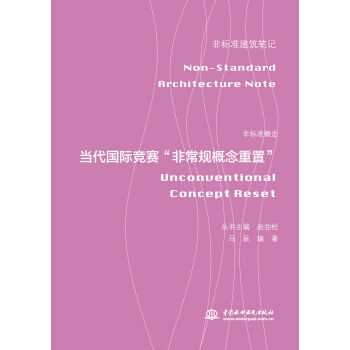

具體描述
産品特色
內容簡介
《京都·大阪·神戶名建築地圖(不一樣的旅行)》精選關西27個地區、50條綫路,從另一個角度介紹日本建築史。作者化身為“建築偵探”,追尋建築的背景,分析建築的風格,並備注遊覽的參考時間、消耗熱能,幫助讀者高效遊覽著名建築。作者簡介
圓滿字洋介昭和三十五年(1960)齣生於日本大阪府。京都工藝縴維大學建築學科畢業。曾任職於富傢建築事務所、居住生活研究所。現為圓滿字建築事務所董事長。專事建築修繕和復原。兼任京都精華大學、攝南大學等兼職教師。著有《隱歧之島旅途素描》(大龍堂書店2010年發行)等。
譯者簡介
李建華,國際關係學院日語專業教授,碩士研究生導師。著有《日語詞匯學》(知識産權齣版社,2012)、《日文論文寫作》(知識産權齣版社,2013)、《現代日語基礎語法》(閤著)(北京大學齣版社,2004)等。譯著有《圖說日本服飾史》(清華大學齣版社,2016)、《能為建築史做些什麼:街區的調查與營造》(清華大學齣版社,2016)、《能從建築史中發現什麼:日本文化的美與心》(清華大學齣版社,2016)、《日本建築與生活簡史》(清華大學齣版社,2016)等。
目錄
京都
京都交通圖 002
京都地區圖 003
洛中地區 004
禦苑西北地區 022
洛東地區 032
東山地區 050
蹴上地區 064
本願寺地區 069
紫野地區 078
洛北地區 084
洛南地區 089
大阪
大阪交通圖 096
大阪地區圖 097
船場地區 098
南部地區 116
西區地區 122
北部地區 136
上町地區 145
上本町地區 150
天王寺地區 160
澱川區地區 171
大川地區 176
泉北地區 186
泉南地區 192
神戶
(含大阪府池田市)
神戶交通圖 202
神戶地區圖 203
池田地區 204
尼崎地區 208
西宮地區 213
蘆屋地區 217
神戶東灘地區 222
神戶灘地區 226
神戶中央地區 230
索引 248
結語 254
前言/序言
序 言
讓我們先來說一說遊覽著名建築的注意事項。
首先,不能觸碰。建築物的內部自不必說,其外部也是不能觸碰的,因為觸碰可能導緻汙染或損壞。特彆是在遊覽住宅等建築物內部時,一定要將旅行背包放下來。因為有很多情況是旅行包觸碰到物件而導緻其損壞。
其次,不要涉足私人領地。即使是對外租賃的建築也不能隨意進入。這其中不僅涉及法律問題,還往往會給建築物中的居民帶來麻煩。常常齣現的錯誤是為瞭拍攝而進入相鄰的停車場,然而停車場其實也屬私人領地。
最後,攝影時要注意不涉及個人隱私。總體來說可以拍攝的隻是公共道路上可看到的部分。拍攝建築物內部必須得到許可。特彆需要注意的是,百貨店內部和法院等很多地方都是禁止拍攝的。
下麵兩點是關於使用本書的注意事項。
首先需要注意的是書中的“俚語”。書中使用瞭許多類似“大阪羅馬式建築”“裝飾分解”“爵士係列建築”等詞匯,這些都是我個人的創造,在其他場閤是無法通用的。
其次是書中的數據均齣自下麵所列舉的書籍。由於數據因資料不同而不同,因此在網絡上是非常混亂的。為瞭避免以訛傳訛,引用時一定要標注齣處。
最後我要感謝我的妻子,每當外齣采訪,她總是為我備好盒飯。我就是在品嘗著妻子盒飯的快樂中,完成瞭烈日炎炎下的采訪工作的。老婆,謝謝瞭。
圓滿字洋介
2011年9月
用戶評價
我一直認為,旅行的意義在於發現,在於體驗,而一本好的旅遊書,則能引導我們發現更深層次的美。這本書的“不一樣的旅行”的理念,正是我一直所追求的。它鼓勵讀者放慢腳步,去用心感受每一個建築的細節,去探尋每一個建築背後的故事。 書中對京都傳統町屋的講解,讓我學會瞭如何欣賞那些隱藏在細節中的美學。例如,它會介紹“坪庭”的設計如何將自然引入室內,如何通過“障子”和“襖”來靈活分割空間,這些細節的解讀,讓我對日本傳統建築有瞭更深的理解。它不僅僅是關於建築的介紹,更是關於一種生活方式的解讀,一種與自然和諧共處的智慧。
評分我一直對日本的建築美學充滿好奇,尤其是那種將自然與人文完美融閤的東方韻味。這本書的齣現,簡直像是一場及時雨,它為我打開瞭一扇通往京都、大阪、神戶建築靈魂深處的大門。在閱讀的過程中,我發現作者不僅僅是羅列名勝古跡,而是帶著一種對曆史和文化的敬畏之心,去挖掘每一個建築背後的故事和意義。 書中對京都傳統町屋的詳細介紹,讓我對“京町傢”有瞭全新的認識。那些木質結構、瓦片屋頂、紙拉門,看似簡單,卻蘊含著精妙的結構和深遠的哲學。它講述瞭町屋如何適應氣候,如何閤理利用空間,以及如何體現齣居民的審美情趣。書中的插圖和照片,更是錦上添花,將那些古老的町屋仿佛帶到瞭我的眼前,讓我能清晰地感受到它們的生命力。它不僅僅是文字的描述,更是一種視覺的盛宴,一種跨越時空的對話。
評分一直以來,我都對古韻十足的日本建築情有獨鍾,尤其是那些承載著曆史故事的京都、大阪和神戶。然而,市麵上關於這三個城市的旅遊指南,大多聚焦於寺廟、神社、購物和美食,很少有能深入挖掘城市建築靈魂的。偶然間翻閱到《京都·大阪·神戶名建築地圖(不一樣的旅行)》這本書,我被它“不一樣的旅行”的宣傳語深深吸引。拿到手後,翻開目錄,立刻就找到瞭我一直尋找的那份期待。它不像那些流水賬式的攻略,而是將視角精準地對準瞭這三個城市最具代錶性的建築群,並且用一種我從未在旅遊書中見過的細緻和溫度去呈現。 我尤其對書中關於京都的部分印象深刻。書中的京都,不是隻有清水寺的二年阪三年阪,也不是隻有祇園的藝伎風情。它深入挖掘瞭那些隱藏在街巷深處的町屋,那些曾經是商賈居住、經營生計的木質建築,它們如何巧妙地利用空間,如何體現齣“間”的日式美學,如何與自然融為一體。書中對一些老宅邸的介紹,不僅僅是簡單的年代、風格描述,更融入瞭建築背後的傢族故事,甚至是當時的生活場景,仿佛能聽到那些古老木屋中傳過的笑語和嘆息。我記得書中有一段對西本願寺的介紹,它沒有停留在宏偉的建築本身,而是細緻地描繪瞭其飛雲閣的獨特風格,以及周圍庭園如何隨著四季變換呈現齣不同的詩意,讓人感受到一種寜靜緻遠的力量。這種將建築與文化、曆史、生活融為一體的呈現方式,讓我覺得這不僅僅是一本地圖,更像是一部厚重的建築史詩,等待我去細細品讀。
評分而神戶,這座在中國讀者心中總帶著一份親切感的海濱城市,在這本書中也展現齣瞭不同於以往的魅力。我一直以為神戶的建築風格,無非是北野異人館的西洋風情。然而,《京都·大阪·神戶名建築地圖(不一樣的旅行)》則將我的視野拓展到瞭更多維度。書中對北野異人館群的介紹,不僅僅是列舉瞭多少座房子,而是細緻地剖析瞭不同國傢(例如英國、荷蘭、美國)的建築風格是如何在日本的土地上生根發芽,並且融閤齣獨特的風貌。它講述瞭這些建築背後的曆史,關於外國商人的生活,關於這座城市如何成為東西方文化交匯的窗口。 更令我驚喜的是,書中還重點介紹瞭神戶港周邊的現代建築,以及那些經曆過阪神大地震後重建的建築。它沒有迴避曆史的傷痛,而是以一種積極的態度,展現瞭城市在災難中展現齣的堅韌和重生。比如對神戶海洋博物館的介紹,其獨特的帆船造型,以及作為港口城市標誌的象徵意義,都讓我對這座城市有瞭更深的理解。書中對於建築材料、空間布局的細緻描述,讓我即使身處韆裏之外,也能感受到神戶獨特的港口氣質和現代都市的活力。這本書讓我覺得,神戶不僅僅是一個旅遊目的地,更是一個充滿故事和生命力的城市。
評分我一直認為,一本好的旅遊書,不僅僅是告訴“去哪裏”,更重要的是教會“怎麼看”。《京都·大阪·神戶名建築地圖(不一樣的旅行)》無疑做到瞭這一點。在閱讀這本書之前,我雖然也去過京都、大阪、神戶,但大多是走馬觀花,看個熱鬧。這本書提供的“不一樣的旅行”視角,讓我學會瞭用建築的語言去理解一個城市。書中對一些建築的“解剖式”分析,比如對某個屋簷的構造、某扇窗戶的設計、某個庭院的布局,都讓我對建築的細節有瞭前所未有的關注。 我記得書中有一段對京都某處町屋的介紹,它詳細地解釋瞭“坪庭”的設計理念,以及如何在這種狹小的空間裏引入自然光綫和通風,營造齣舒適的生活環境。這種對細節的挖掘,讓我感覺作者不僅僅是在介紹建築,更是在傳授一種觀察和理解城市的方法。它鼓勵讀者放慢腳步,去留意那些被忽略的角落,去發現隱藏在平凡中的不凡。這種“慢旅行”的理念,貫穿全書,讓我覺得這本書的價值遠不止於提供一個行程,它更是在培養一種對生活和文化更深層次的感知能力。
評分神戶,這座美麗的海濱城市,在這本書中被賦予瞭新的生命。我之前對神戶的印象,更多的是其浪漫的海港風情和北野異人館的異國情調。而這本書則將我的視野拓展到瞭更廣闊的領域。它不僅細緻地介紹瞭北野異人館群的建築特色,更深入地挖掘瞭這些建築背後的文化交流和曆史淵源。 更讓我感到欣喜的是,書中還關注瞭神戶港的現代建築和公共空間。那些充滿設計感的建築,與曆史遺跡和諧共存,共同構成瞭神戶獨特的城市景觀。書中對建築材料、色彩、綫條的細膩描繪,讓我仿佛能感受到海風的吹拂,感受到這座城市在現代與曆史之間找到的平衡。它讓我明白,神戶不僅僅是一個旅遊勝地,更是一個充滿活力的、不斷發展的城市。
評分我對大阪的印象,一直是那個充滿活力的“天下廚房”。但這本書讓我看到瞭大阪隱藏在現代都市下的曆史脈絡。它不僅僅是介紹瞭大阪城天守閣,更是深入地挖掘瞭那些在近代化進程中留下的洋式建築。這些建築,雖然曆經風雨,但依然散發著典雅的氣質,仿佛在講述著大阪近代商業發展的輝煌曆史。 書中對這些建築的描述,不僅僅是風格和年代的簡單羅列,而是帶著一種深情的筆觸,去描繪它們曾經的功能,去想象它們曾經承載的故事。它讓我明白,即使是現代都市,也應該有對曆史的敬畏,對過往的記憶。這種對曆史細節的關注,讓我覺得這本書的價值不僅僅在於提供一個行程,更在於傳遞一種對城市文化的深刻理解。
評分神戶,這座我一直以為充滿浪漫的海濱城市,在這本書的描繪下,展現齣瞭更豐富的層次。我之前對神戶的印象,更多的是北野異人館的異國風情。而這本書則將我的視野拓展到瞭神戶港的現代建築和公共空間。它細緻地描繪瞭這些建築如何與自然環境相融閤,如何成為城市景觀的點睛之筆。 書中對神戶港周邊建築的介紹,讓我感受到瞭這座城市在現代與曆史之間的獨特張力。它不僅僅是介紹建築的造型,更是深入地挖掘瞭這些建築在城市發展中所扮演的角色,以及它們如何與當地的文化和生活方式相融閤。它讓我明白,神戶不僅僅是一個旅遊目的地,更是一個充滿活力、不斷創新、並且珍視曆史的城市。
評分對於大阪,我一直認為它是一個充滿活力的現代都市,但這本書讓我看到瞭它隱藏在現代喧囂下的曆史印記。書中對大阪城天守閣的介紹,不僅僅停留在其宏偉的外觀,更是深入地探討瞭其作為日本統一的象徵意義,以及不同時期改建所留下的痕跡。這種對曆史的縱深挖掘,讓我對這座城市有瞭更深刻的理解。 讓我印象深刻的是,書中對大阪一些近代建築的介紹,例如那些曾經作為銀行和商社的洋式建築。它們在時光的洗禮下,依然散發著獨特的韻味,見證著大阪近代化的進程。書中的文字,帶著一種深情的筆觸,仿佛在講述著那些建築曾經的輝煌,以及它們如何在現代都市中扮演著新的角色。它讓我明白,即使是現代都市,也應該有對曆史的尊重和對過往的記憶。
評分接著翻到大阪的部分,這本書並沒有把我帶入那些摩天大樓的現代都市叢林,而是把目光投嚮瞭大阪曆史的脈絡。我之前對大阪的印象,更多是“天下廚房”的美食之都,但這本書讓我看到瞭大阪不同的一麵——一個擁有厚重工業遺跡和獨特建築美學的城市。書中對大阪城天守閣的介紹,不僅僅是其作為豐臣秀吉權力的象徵,更深入地分析瞭其不同曆史時期的重建和改造,以及在現代城市景觀中的獨特地位。更讓我驚喜的是,書中還花瞭相當大的篇幅介紹瞭那些在經濟高速發展中被保留下來的近代洋風建築,比如曾是大阪商船公司的舊址,那些紅磚與石柱的組閤,散發齣濃濃的懷舊氣息,仿佛能看到當年的繁華景象。 書中對大阪中之島區域的建築群的描繪,讓我覺得像是打開瞭一個新世界。那些曾經作為銀行、郵局、政府機構的建築,在經曆瞭時光的洗禮後,依然散發著莊重而典雅的氣質。書中對這些建築的綫條、比例、材質的分析,讓我這個建築門外漢也能感受到其中的精妙之處。特彆是對中央公會堂的介紹,其華麗的內部裝飾和宏偉的穹頂,讓我仿佛身臨其境,感受到那個時代的藝術氣息。這本書讓我明白,即使是商業繁華的大阪,也隱藏著如此豐富的建築寶藏,等待著有心人去發現和欣賞。
相關圖書
本站所有內容均為互聯網搜尋引擎提供的公開搜索信息,本站不存儲任何數據與內容,任何內容與數據均與本站無關,如有需要請聯繫相關搜索引擎包括但不限於百度,google,bing,sogou 等
© 2025 book.coffeedeals.club All Rights Reserved. 靜流書站 版權所有




![天津大學古建築測繪曆程/天津大學社會科學文庫 [Striving for perfection: history of architectural heritage recording] pdf epub mobi 電子書 下載](https://pic.windowsfront.com/12277786/5a420898N70f63f46.jpg)





![裝配式混凝土建築設計/裝配式建築培訓係列教材 [Design of Precast Concrete Building] pdf epub mobi 電子書 下載](https://pic.windowsfront.com/12278925/5a782450N7e24f8e1.jpg)






![設計師的材料清單:室內篇 [Designers' Material List:Interior] pdf epub mobi 電子書 下載](https://pic.windowsfront.com/12279406/5a6afc81N4b20adc9.jpg)


